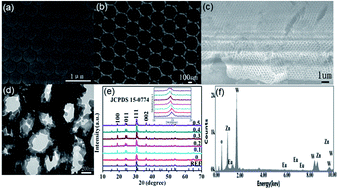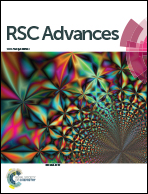ZnWO4/ZnWO4 : Eu3+ inverse opal photonic crystal scintillator: efficient phosphors in radiation detection
Abstract
Phosphors with photonic crystal (PC) structures may demonstrate modulated optical properties and have potential applications in various optical devices. In this study, we represent the fabrication of ZnWO4 and ZnWO4 : Eu3+ inverse opal photonic crystal (IOPC) scintillators based on polymethyl methacrylate (PMMA) templates. Typical modified photoluminescent properties in PCs were observed such as the suppression of emissions near the edge of photonic stop bands (PSBs) and prolonged decay time constants. Moreover, it is very interesting to observe that the luminescent quantum efficiency of the IOPC samples was remarkably enhanced compared to the corresponding ground powder references (REFs) and the quantum efficiency of ZnWO4 IOPCs was as high as 70%, which was almost the optimum among various ZnWO4-based phosphors reported before. Furthermore, the energy transfer (ET) efficiency from tungstate groups to Eu3+ was determined based on luminescent dynamics, which indicated that the efficiency in the IOPCs was considerably improved compared to that in the REFs owing to the suppression of the spontaneous emission rate for the tungstate groups. It was also demonstrated that ZnWO4 : Eu3+ IOPCs could be used as white light phosphors.


 Please wait while we load your content...
Please wait while we load your content...